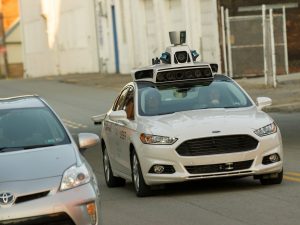 A new study found that self-driving vehicles may have a harder time detecting people with dark skin, and it could point to a bigger issue with how the technology is tested
A new study found that self-driving vehicles may have a harder time detecting people with dark skin, and it could point to a bigger issue with how the technology is tested
A new study suggests autonomous driving systems may have more difficulty detecting pedestrians with dark skin than those with light skin.
- The researchers analyzed how effective image-detection systems were at identifying light-skinned and dark-skinned pedestrians.
- On average, the image-detection systems were 5% less accurate at detecting dark-skinned pedestrians.
- The researchers suggested that the difference could result from not having enough dark-skinned pedestrians in the images used to train the systems and the systems’ insufficient emphasis on learning from the smaller population of dark-skinned pedestrians.
A new study suggests autonomous driving systems may have more difficulty detecting pedestrians with dark skin than those with light skin.
The researchers responsible for the study had eight image-detection systems analyze images of pedestrians. The people in the photos were separated into two groups based on how their skin tones aligned with the Fitzpatrick skin type scale, which divides skin tones into six categories. One group consisted of pedestrians who fell into one of the three lightest categories on the Fitzpatrick scale, while the other group consisted of pedestrians who fell into one of the three darkest categories on the Fitzpatrick scale.
Biased Self-Driving Cars
We already knew that some facial recognition systems struggle to accurately identify people with darker skin.
Now we know that many of the artificially intelligent systems designed to help autonomous cars navigate roads have the same problem — and the result could disproportionately endanger pedestrians with darker skin, a troubling sign of how AI can inadvertently reproduce prejudices from the wider world.
Inaccurate AI
In a new paper published on the preprint server arXiv, researchers detail their investigation of eight AI models used in state-of-the-art object detection systems. These are the systems that allow autonomous vehicles to recognize road signs, pedestrians, and other objects.
They tested these models using images of pedestrians divided into two categories based on their score on the Fitzpatrick scale, which is commonly used to classify human skin color.
According to the researchers’ paper, the models exhibited “uniformly poorer performance” when confronted with pedestrians with the three darkest shades on the scale.
On average, the models’ accuracy decreased by 5 percent when examining the group containing images of pedestrians with darker skin tones, even when the researchers accounted for variables such as whether the photo was taken during the day or at night.
The image-detection systems then attempted to identify all of the pedestrians in the images, and the researchers compared the systems’ abilities to detect light-skinned pedestrians versus dark-skinned pedestrians. On average, the image-detection systems were 5% less accurate at detecting dark-skinned pedestrians, even when the researchers controlled for variables that may have been able to explain the disparity, like pedestrians who were partially blocked from view or the time of day the photo was taken.
The researchers suggested that the differences in pedestrian-detection accuracy could result from not having enough dark-skinned pedestrians in the images used to train the systems, as well as the systems’ insufficient emphasis on learning from the smaller population of dark-skinned pedestrians.
While we note that the study has not been peer-reviewed and did not use the same image-detection systems or image sets featured in current self-driving vehicles, the study suggests that companies developing autonomous-driving technology should be attentive to the methods they use to train vehicles to identify pedestrians.
The Solution
The team’s research suggests that we could be on a path to a future in which a world rife with autonomous cars isn’t as safe for people with dark skin tones as it is for lighter-skinned pedestrians.
Thankfully, based on their study, they were able to figure out what we need to do to avoid a future of biased self-driving cars: start including more images of dark-skinned pedestrians in the data sets the systems train on and place more weight on accurately detecting those images.
Did you know that if you subscribe to our website, you will receive email notifications whenever content changes or new content is added.
1. Enter your e-mail address below and click the Sign Me Up button.
2. You will receive an email asking you to confirm your intention of subscribing to our site.
3. Click the link in the email to confirm. That’s all there is to it! Note: if you wish to unsubscribe from our site, click the unsubscribe link at the bottom of the email you received.
Then indicate you no longer wish to receive our emails.
Thank You
Dialect Zone International